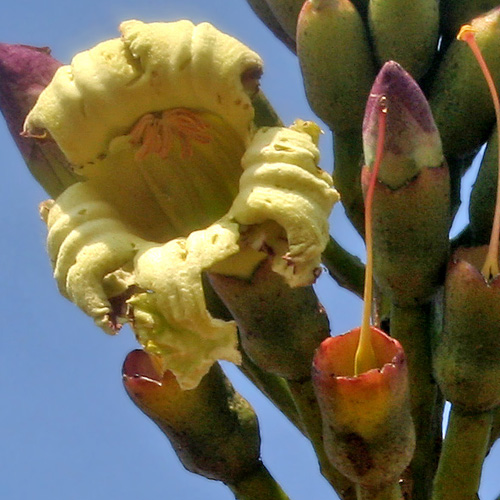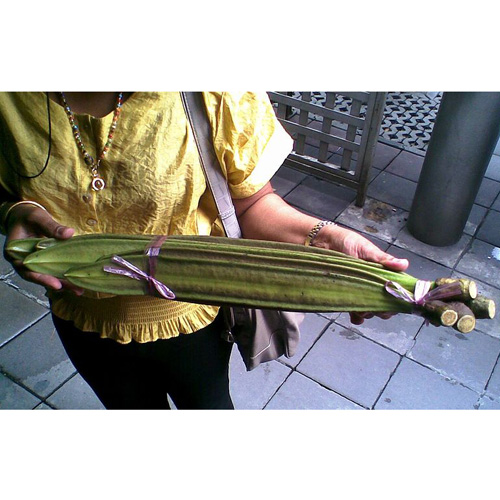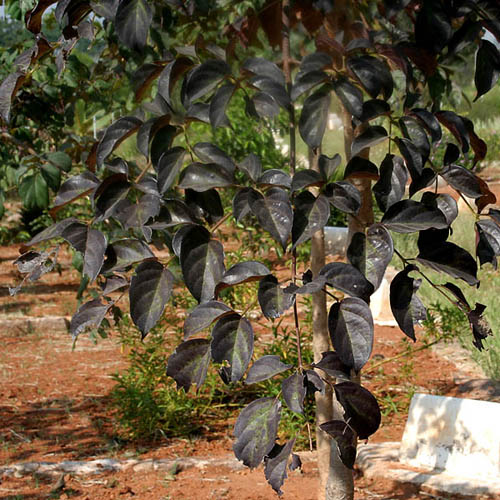Democlesz tree (Oroxylum indicum) 5 grains
Oroxylum indicum - Tree of Damocles - Midnight Horror - Broken Bones Plant
Natural habitat of Asia, Himalayas and southern China.
The plant itself resembles a medium-sized tree, the flowers open at night and can be yellow or red, pollination is by bats. The flowering will be replaced by a huge 50-60cm long curved seed which hangs from the branc...
Long description
| HUF 1,382 * (nettó: HUF 1,088) | |
Shipping
face
Personal receipt of goods:
Akár a mai napon
info
Akár még a mai napon. A rendelés leadása után összekészítjük a csomagot, majd sms - ben vagy e - mailen értesítjük, hogy a termékek átvehetőek (Gazdabolt_2 üzletünkben, hétfőtől - péntekig 8:00 - 17:00 óra között).
By courier:
1-5 nap
info
A rendelés leadása után a futárszolgálat 1-7 munkanap alatt szállítja ki a csomagot, melyről e-mailben értesítjük.
Oroxylum indicum - Tree of Damocles - Midnight Horror - Broken Bones Plant
Natural habitat of Asia, Himalayas and southern China.
The plant itself resembles a medium-sized tree, the flowers open at night and can be yellow or red, pollination is by bats. The flowering will be replaced by a huge 50-60cm long curved seed which hangs from the branches like a sword or sickle. Falling from the tree and withering away, they appear as if broken bones are heaving around the tree. It gets its English name from this gruesome appearance.
Medicinal importance:
The unripe, young seeds are edible after roasting. In Thailand and Laos, the leaves are also used as a vegetable, and various parts of the plant are used in Western and traditional medicine to treat a range of ailments. E.g. : the bark of its root has stomachic and analgesic properties. Its bark is used for rheumatic pains, etc.
BIGNONIA
The genus is a member of the trumpet family (Bignoniaceae). Its natural habitat is the southeastern USA.
Cultivation:
Can be grown in well-drained, fertile soil in full sun or partial shade. Its pest is the barnacle. It can be propagated from seed or by grafting.
Minimum temperature : Not frost tolerant.
Natural habitat of Asia, Himalayas and southern China.
The plant itself resembles a medium-sized tree, the flowers open at night and can be yellow or red, pollination is by bats. The flowering will be replaced by a huge 50-60cm long curved seed which hangs from the branches like a sword or sickle. Falling from the tree and withering away, they appear as if broken bones are heaving around the tree. It gets its English name from this gruesome appearance.
Medicinal importance:
The unripe, young seeds are edible after roasting. In Thailand and Laos, the leaves are also used as a vegetable, and various parts of the plant are used in Western and traditional medicine to treat a range of ailments. E.g. : the bark of its root has stomachic and analgesic properties. Its bark is used for rheumatic pains, etc.
BIGNONIA
The genus is a member of the trumpet family (Bignoniaceae). Its natural habitat is the southeastern USA.
Cultivation:
Can be grown in well-drained, fertile soil in full sun or partial shade. Its pest is the barnacle. It can be propagated from seed or by grafting.
Minimum temperature : Not frost tolerant.
| Weight: | 0.025 kg |
|---|---|
| Width: | 3 mm |
| Height: | 100 mm |
| Length: | 150 mm |
| Aviability: | 1-4 nap |
| Basic sales unit: | db |
Login
Login or registration with a social account
Login
Login or registration with a social account


